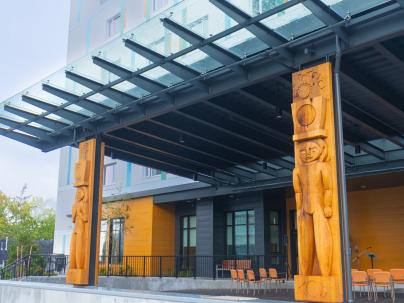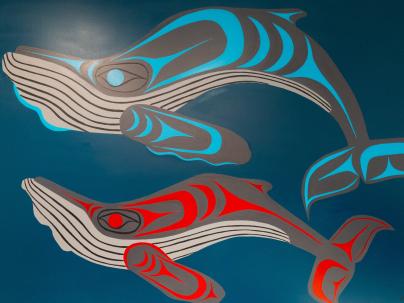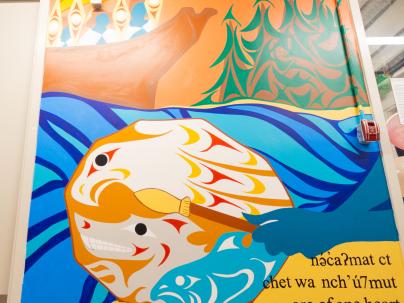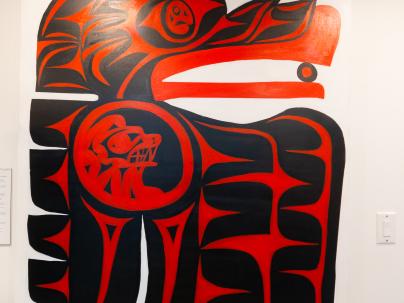News
Indigenous art projects aim to make Vancouver Community sites more culturally safe
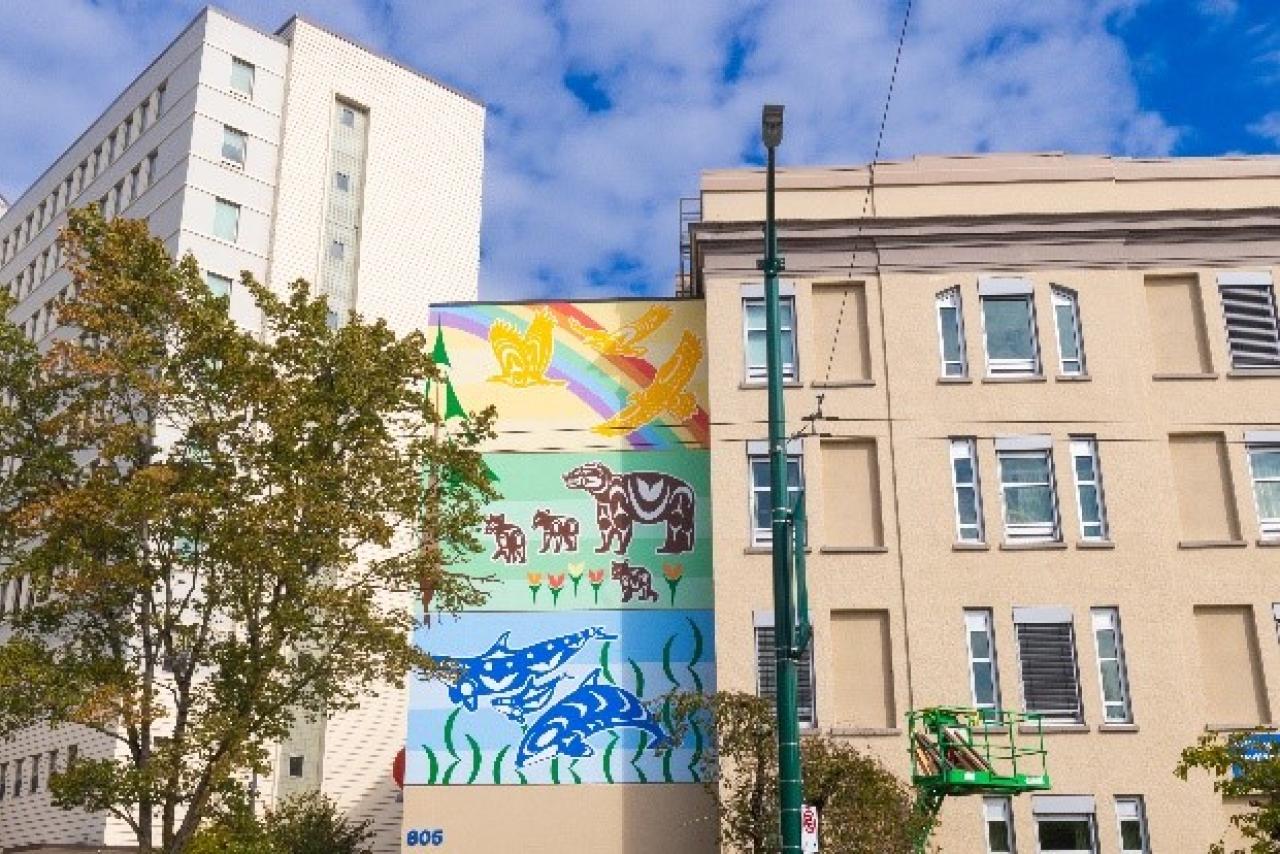
Creating safer spaces is a critical part of the work we do to support Indigenous clients, patients and families to feel comfortable, seen and valued.
Informed by community engagement with First Nations and community partners, three Indigenous art projects were unveiled at sites in Vancouver Community to create more inclusive spaces, and advance our broader journey towards reconciliation.
“It was important to create an engagement process that was meaningful and inclusive," shares Emina Dervisevic, Manager, Community Engagement, “and to create opportunities for Host Nations to define the engagement process, and where possible, involve clients and staff to inform the themes."
Willow Pavilion
It is difficult to miss the beautiful colours of the mural that wraps around the southwest corner of Willow Pavilion on West 12th Avenue, on the Vancouver General Hospital campus. In her piece, artist Olivia George, a member of the Tsleil-Waututh Nation, honours her Indigenous culture and beliefs.
The idea to install a mural came from Leo Gosselin, Vocational Rehabilitation Coordinator, Adult Tertiary Mental Health and Substance Use, who saw it as a way to increase cultural safety through Indigenous art.
The Community Engagement team sought feedback, advice and wisdom from the Host Nations, which guided the project approach, and input from the Willow Pavilion community identified important themes that were incorporated into the mural.
In partnership with Vancouver Mural Festival, we helped bring Olivia’s design to life. “There are three levels to the wall, so three elements are represented: air, land and water,” Olivia describes. “Each section of the mural creates an environment that feels healing, caring and safe.”
Dogwood Care Home
At the new Dogwood Care Home, residents and visitors are welcomed through the front entrance by traditional Coast Salish posts and house boards, designed by artists Brent Sparrow and Thomas Cannell of the Musqueam Nation. The Female House Post and Male House Post are both carved from one red cedar log, and represent the strength of Brent's and Thomas' ancestors. The House Boards are carved from another red cedar log. “The design reflects the abundance of eagles and salmon in and around the Fraser River where the Musqueam have lived," the artists explain.
Downtown Eastside Youth Outreach
Three murals help to create a culturally safe and welcoming environment for clients who receive care from the Downtown Eastside Youth Outreach team. Each mural reflects themes shared during community engagement by youth from the Host Nations, as well as clients of the youth outreach program, about what makes a space feel inclusive.
Diamond Point, an artist and member of the Musqueam Nation hopes her mural conveys a feeling of “home away from home" for youth not from this territory through her reflection of Indigenous protocol and the sunsets she associates with home. She included the message, “we are of one heart" in English and in the traditional languages of the Host Nations.
Ryan Hughes, a youth artist from Snuneymuxw First Nation, focused on the raven and the story of creation in his piece. He shares that the raven represents transformation and similarly, youth go through transformation – physically, mentally and spiritually.
Chris Sparrow, a Coast Salish artist and member of the Musqueam Nation, painted a mural of two humpback whales. Sparrow says the whale represents the strong and powerful spirit of the youth, and is fitting for a space that offers health and wellness services to young people.
"These works of art are a prominent signal visually to Indigenous clients, staff and community members that these places and services are for them too – and that this is a welcoming space," says Leslie Bonshor, Vice President, Indigenous Health. "The commitment to reconciliation in every way possible throughout our health system, including our physical spaces inside and outside, demonstrates in a very public way that we are implementing our commitment."


